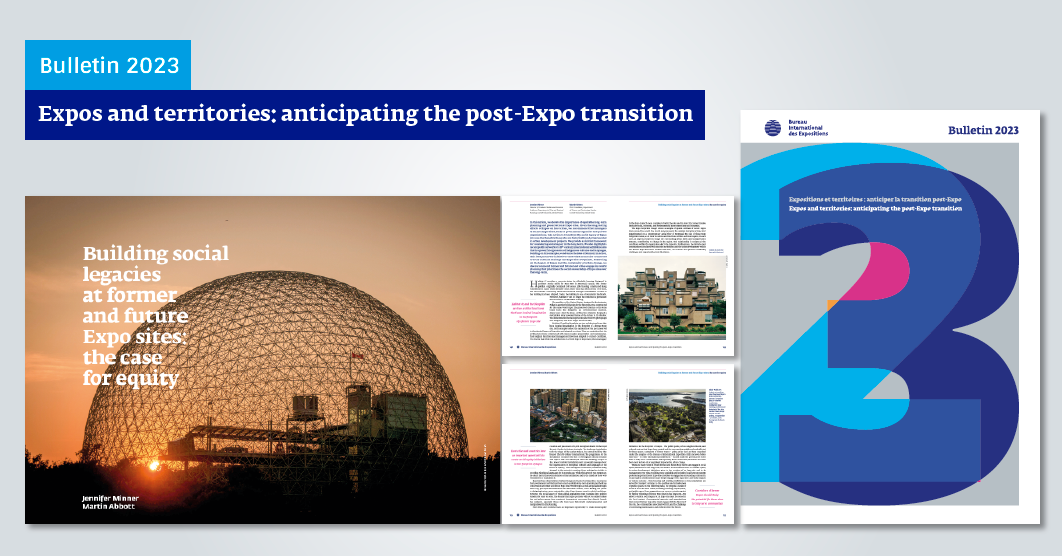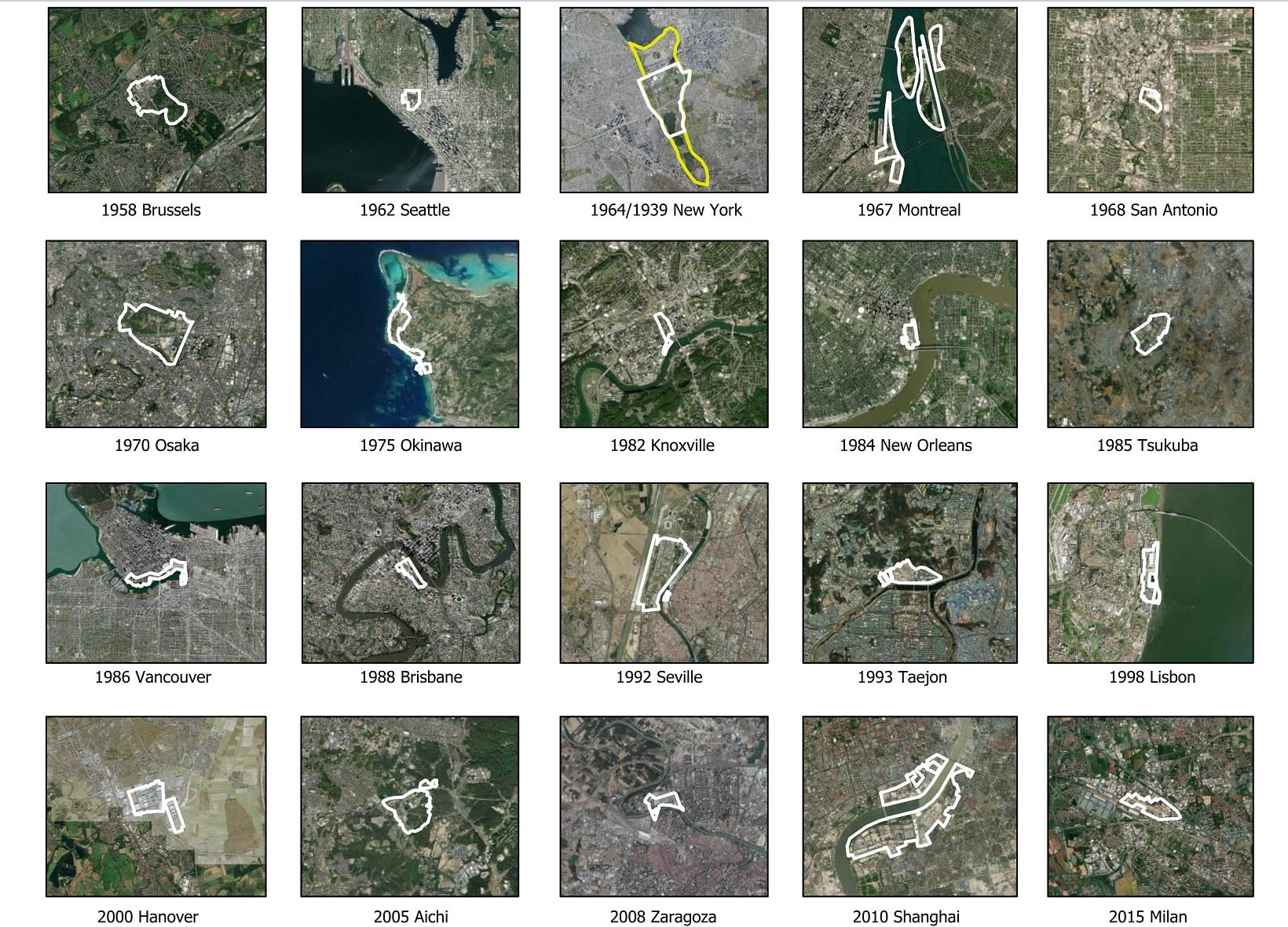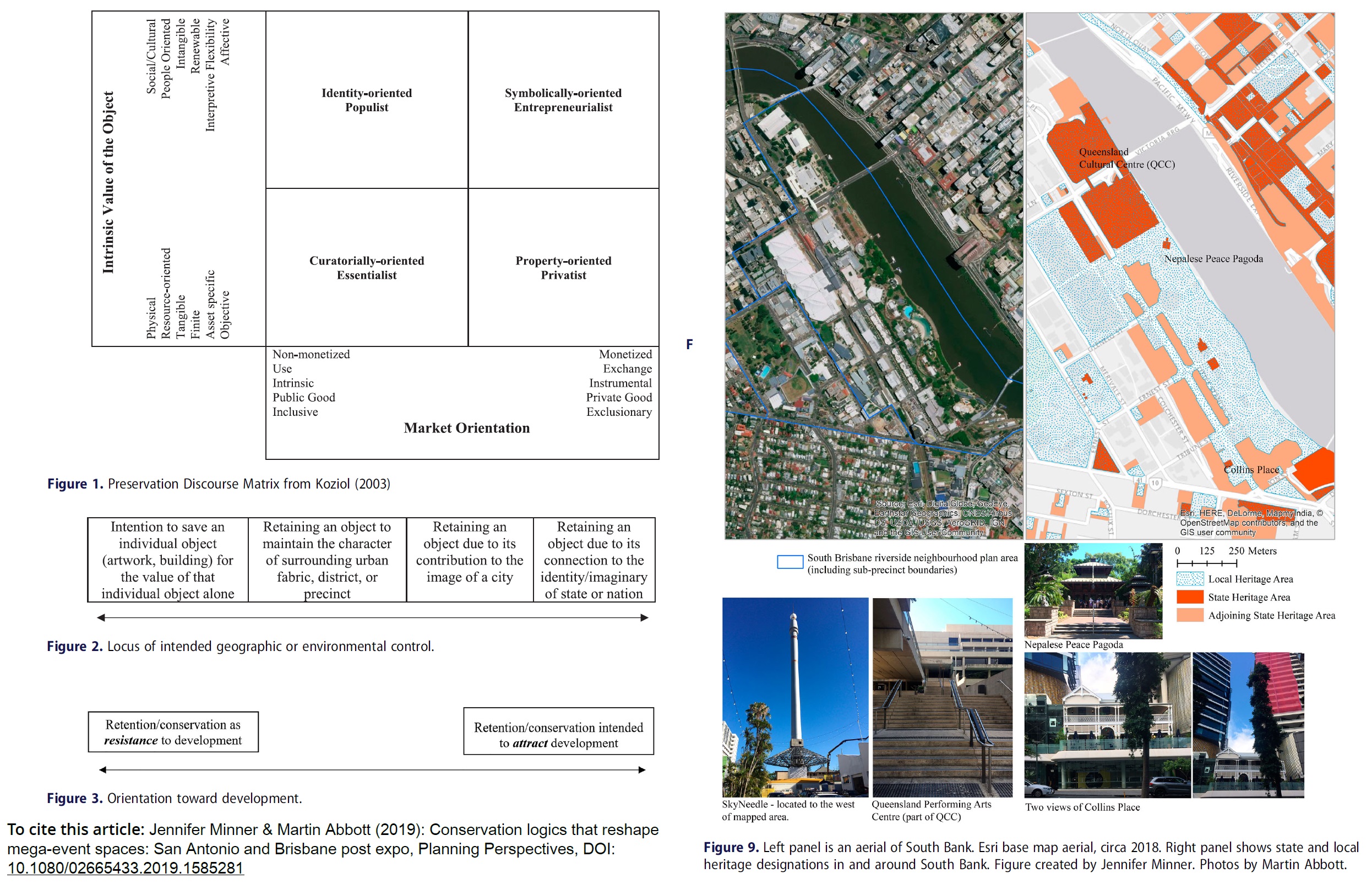← Back to Collaborative Research + Creative Action
Mega-events: Urban Spaces and Memory
Tracing the social and spatial impacts of events

"Building social legacies at former and future Expo sites: the case for equity," by Jennifer Minner and Martin Abbott, was recently published in the 2023 Bulletin of the Bureau International des Expositions (BIE). In this article, Minner and Abbott elevante the importance of equitable long-term planning and preservation at Expo sites. Given the long-lasting effects of Expos on host cities, they recommend that managers of former Expo sites, such as government agencies and private organizations, take action to transform the social legacy of Expos into one that benefits those who are historically underrepresented in urban development projects. They provide an initial framework for considering social legacy in the long term. They also highlight a recent public artwork at a 19th century international exhibition site that is a powerful expression of Indigenous cultures and languages. Building on this example, they advance the idea of Memory in Action. This idea promotes initiatives that build memories connected to local cultural heritage and Expo site footprints. Reflecting on the legacy of Expos and the complexity of urban change, they also recommend former and future host cities engage in careful planning that prioritize the social stewardship of Expo sites over the long-term. More information and the link to download the entire 2023 BIE Bulletin is available here.
Mega-events, such as World Expos (also known as World Fairs or International Exhibitions) and the Olympics games, are large-scale mega-projects that restructure urban space in host cities. Coordinated by international organizations and enacted by host countries and cities, mega-events provide valuable case studies for the study of urban redevelopment schemes and their impacts. The Just Places Lab has been the site of a series of research projects and classes trace change over time at former mega-event sites, analyze controversies over urban development and displacement, and explore the preservation and interpretation of complex histories and questions of equity and sustainability at these sites.
Dr. Minner has researched and engaged in preservation projects related to world's fair sites for more than a decade. While living in Central Texas, she was an advocate for the preservation of the architecture and landscapes left over from Hemisfair '68 in San Antonio. Since coming to Cornell University, Minner has directed and collaborated on related research projects and taught undergraduate and graduate classes that use a variety of qualitative and spatial methods to explore the spaces carved out by mega-event sites. Educational events and collaborations have included visits by artists Jade Doskow and Jonathan Jones to talk about artwork related to landscapes and memory at former event sites. Recent work with Martin Abbott, a PhD candidate in Science and Technology Studies has explored not only the physical sites and remnants of expos, but also their cultural memory through essay films and public artwork. Additionally, she recently presented a paper at the Association of Collegiate Schools of Planning co-authored with two Cornell MRP alumni, Grace Zhou and Brian Toy.

Diagram showing footprints/craters of former World Expos and Specialized Exposition sites. From a working paper written by Jennifer Minner, Grace Yixian Zhou, and Brian Toy.

Selected figures from an article by Jennifer Minner and Martin Abbott. (2019). Conservation logics that reshape mega-event spaces: San Antonio and Brisbane post expo. Planning Perspectives.
Related sites:
- A World's Fair Landscape In Time: A Study of Flushing Meadows Corona Park
- Sustainable Adaptation of Modern Footprints
Related Journal Articles
-
Minner, Jennifer, Zhou, Grace Yixian,* and Toy, Brian.* (2022) Global city patterns in the wake of world expos: A typology and framework for equitable urban development post mega-event. Land Use Policy 119, 106163.
-
Minner, Jennifer. (2019) Assembly and Care of Memory: Placing Objects and Hybrid Media to Revisit International Expositions. Curator: The Museum Journal 62(2): 151-176. DOI: 10.1111/cura.12291
-
Minner, Jennifer and Abbott, Martin. (2019). Conservation logics that reshape mega-event spaces: San Antonio and Brisbane post expo. Planning Perspectives. Published on-line first. Pages 1-25. DOI: 10.1080/02665433.2019.1585281
- Minner, Jennifer & Chusid, Jeffrey. (2016). Time, Architecture, and Geography: Modeling the Past and Future of Cultural Landscapes. APT Bulletin: The Journal of Preservation Technology, 47(2/3), 49-58. Winner of 2016 Oliver Torrey Fuller Award.
Related Book Chapters
- Minner, Jennifer. (2018). Tours of Critical Geography and Public Deliberation: Applied Social Sciences as Guide. In Wells, J., & Stiefel, B. L. (Eds.), Human-Centered Built Heritage Conservation: Theory and Evidence-Based Practice. New York, NY: Routledge. ISBN-10: 1138583944; ISBN-13: 978-1138583948.
- Minner, Jennifer. (2017). Geodesign, Resilience, and the Future of Former Mega-event Sites. In Geertman, S., Allan, A., Stillwell, J., & Pettit, C. (Eds.), Planning Support Science for Smarter Urban Futures. New York, NY: Springer.
- Minner, Jennifer. (2016). Framing Lost Utopias: The Place of International Expositions in Time. In Doskow, Jade, Lost Utopias: Photographs of Jade Doskow (pp. 10-15). London: Black Dog Publishing.
Selected Presentations
- Minner, Jennifer, Zhou, Grace Yixian, and Toy, Brian. (2021). Peering into mega-event impact craters: post-expo urban development and the pursuit of just places. Association of Collegiate Schools of Planning. Virtual.
- Abbott, Martin and Minner, Jennifer. (2021). Hidden projections: cinematic resistance from the urban interiors of Australia. For the Behind the Scenes of the City: The Hidden, the Forbidden, the Forgotten conference. Stockholm City Museum. Stockholm, Sweden and Virtual.
- Jennifer Minner. (2019) Mega-events: Impact Craters and Reservoirs of Memory. School of Geographical Sciences and Urban Planning colloquium series. Arizona State University, Tempe, AZ.
- Minner, Jennifer and Martin Abbott (2019). Moving Images that Remember the City: the role of independent film in social preservation. Cultural and Historic Preservation Conference. Salve Regina University. Newport, RI.
- Abbott, Martin and Jennifer Minner (2019). How Urban Spaces Remember: The Essay Film as Archive for Protest and Resistance. City, Essay, Film interdisciplinary symposium at University College London. London, UK.
- Abbott, Martin and Jennifer Minner. (2018). Narratives of Retention: Displaced cultural landscapes in the historical mega-event spaces of Brisbane and Sydney. Association of Collegiate Schools of Planning, Buffalo, NY.


